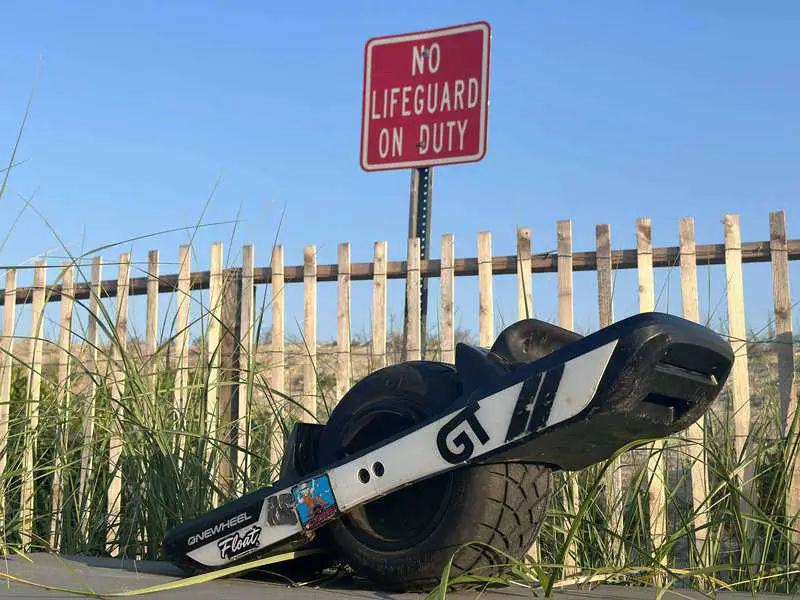
Wind in your hair, the taste of salt in the air, and the thrill of uncharted terrains beneath your feet. Imagine gliding effortlessly on a self-balancing board, the Onewheel. So how does the Onewheel react to beach riding? The whole experience depends on where you’re riding. Below are some tips for you to get the full experience from sun rise to sun down.
Can the Onewheel Handle Beach Sand
So the Onewheel is one of the most capable all-terrain PEV’s you can purchase. In the PEV space, other than an EUC, the Onewheel is going to be able to carry a rider across the sand more enjoyably than other electric skateboards. That being said, there are definitely areas I would suggest staying near and places to avoid. It is also to be noted that saltwater is corrosive so it is important to lightly rinse off the onewheel to minimize the potential for corrosion or damage. Regular cleaning and maintenance can help mitigate the effects of salt water on your Onewheel.
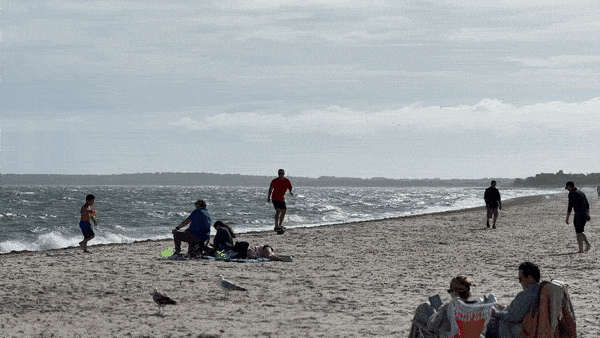
The best beaches to ride on a Onewheel depends completely on the density of the sand. Sand right before the shoreline generally has a good density composition for riding on. This area of the beach is ideal for riding as well as it is smooth. You just need to be cautious you don’t get your Onewheel swallowed by the water.
Dunes and Dry / High Beach Sand
Sand on the dunes and furthest from the coast tend to be the loosest and most unpredictable. While the Onewheel can travel over this type of sand, it is very difficult to maintain a good speed and enjoy the ride. Because this area on the beach is usually extremely uneven and loose, it is common to lose balance in this area on the beach. The enjoyment level in my opinion is rated 1 out of 10.
Treaded or slick wont matter too much here. While treaded will always give an advantage on off-road terrain, because much of this sand is very loose, you can still have the board slip and nosedive even with the chunkiest treading. A treaded tire however will be preferred.
Beach Coast Onewheel Riding
This area on the beach is optimal for the Onewheel. Along the coast, the sand is generally flat and more dense due to its moisture content. Because the tides moving this sand around, the sand around 1 to 10 feet from the water is most predictable and allows for higher speeds and more overall enjoyment. While this area is the most enjoyable riding zone., you do need to be mindful of other beach goers and the ocean itself.
While Onewheels are assembled with some degree of water resistance. They are by no means waterproof. V1, Onewheel Plus and early XR models (pre-4209) are the worst when it comes to water exposure. Some riders have reported errors after riding over a large puddle. Newer boards (Pint, Pint X and GT) are better with water exposure. I have not found where Future Motion has stated this but several Pint X and GT models are advertised as having an IP65 water resistant rating.
In this video, this kid is riding his Pint into the ocean. It is unknown if the board is badgered (waterproofing kit), however even if it is, the salt water exposure along with the potential for electrical damage is of high concern. While the video shows the Onewheel underwater, if you want yours to perform for years and years, avoid the water completely.
Docks, Piers and Boardwalk Onewheel Riding
This one you will have to feel out. If a boardwalk states “No skateboarding”, while this isn’t referencing Onewheel’s specifically, it typically includes Onewheels. You can always try and just be polite if beach patrol approaches you and explain the nuanced language.
Personally I have not had any issues riding on piers or boardwalks. The boardwalks that I travel on however are low-density areas. Foot traffic is at a minimum. I would not suggest riding a Onewheel on a congested boardwalk. We always need to be good ambassadors for the sport and if you think its too tight to ride, then avoid it.
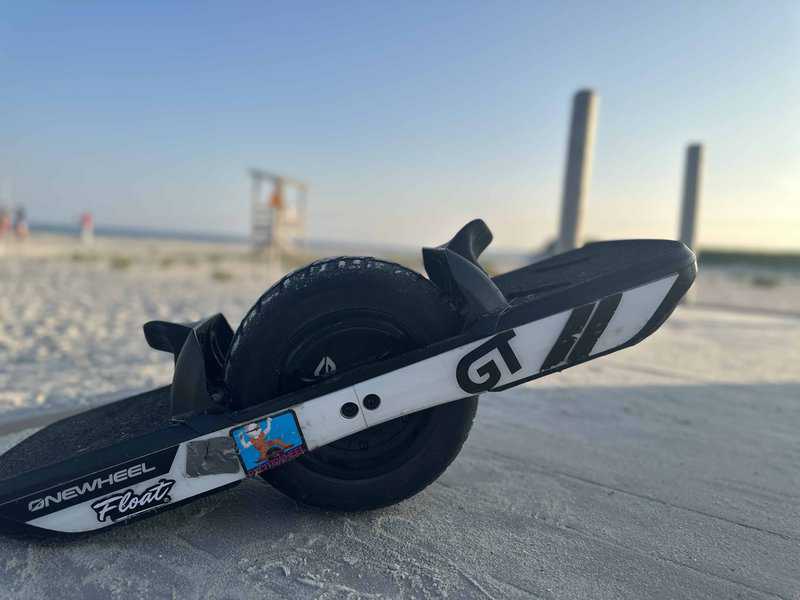
If you do ride, boardwalks and piers are a blast. Especially when few people are on them. These areas on the beach are very predictable and can be ridden with total enjoyment. If you do head out on a pier (or dock), just remember to focus on your dismount. The last thing you want is to have a sloppy dismount and see your board fly off the pier into the ocean.
Maintenance After Saltwater Exposure
If you were riding a freshwater lake then there’s no worries here however if your board has had some saltwater exposure, you should clean it off after the ride. You can lightly spray off the board to get the salt water off however for me, I prefer to ride through tall grass. Just spray a yard with tall grass and pass over it a few times.
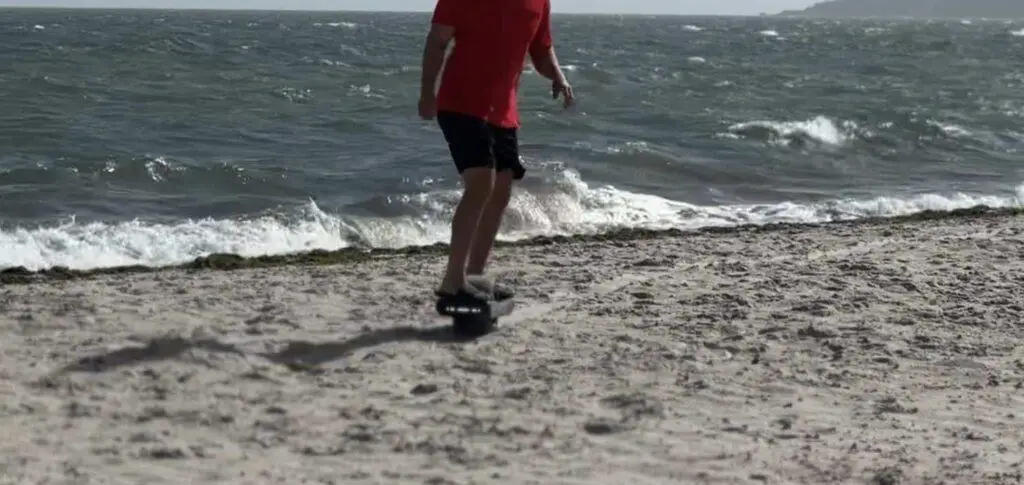
I truly try avoid spraying water on my board. Even the sensor. It is just grip tape and a foot pad right? Well, if your grip tape gets saturated, it can compromise the sensitivity of the sensor. I always prefer using a nylon brush and a wet / damp cloth. You should always perform regular maintenance on your Onewheel. Saltwater is corrosive so try to get most of it off with a thorough wipe or a light rinse. The bearings can take most of the hit but you would not notice an issue until hundreds or thousands of miles later on.
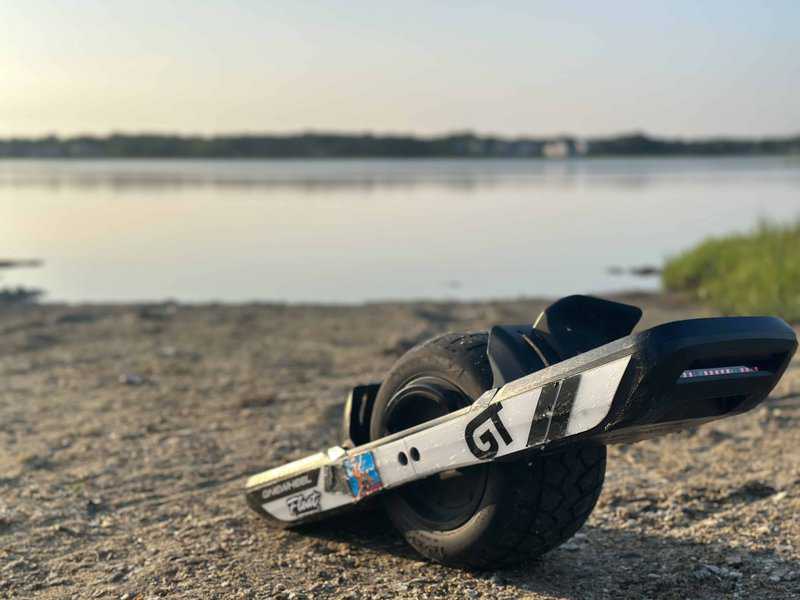
Experience that beach sunset from a ride on the ocean beach. Just always make sure you stay on top of the maintenance.
